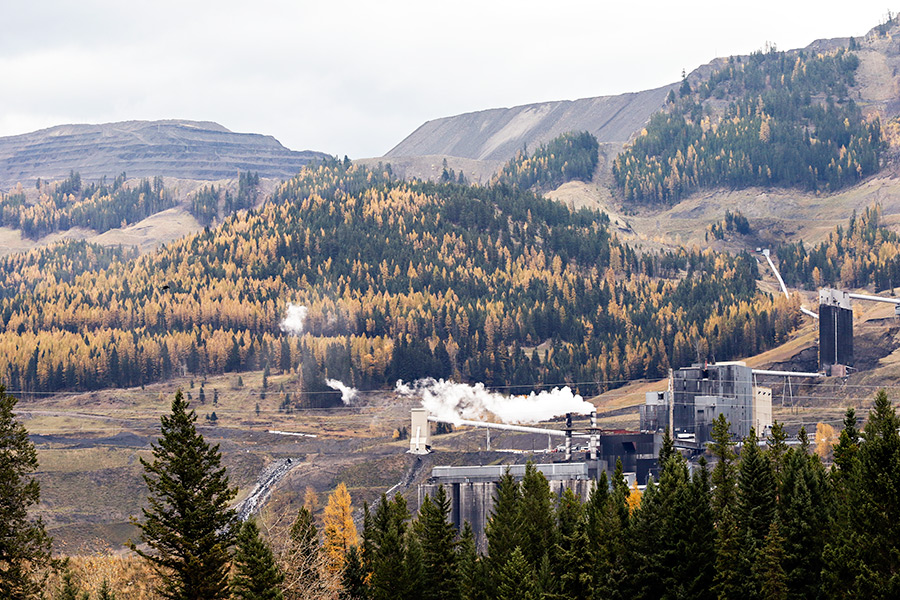Researchers tracking the influx of mining contaminants in Lake Koocanusa say their recent analysis of fish muscle-tissue samples shows no significant increase in the concentrations of a pollutant called selenium, which is leaching from Canadian coalmines downstream and into the trans-boundary reservoir.
According to Montana Fish, Wildlife and Parks, muscle-tissue samples from 10 species of fish in Lake Koocanusa collected in May of this year are consistent with sampling done in 2013, showing no increase during that five-year period.
The data is a departure from the results of fish-tissue samples collected in 2008 and again in 2013, which showed increasing trends in elevated selenium levels. During that five-year period, Trevor Selch, a water pollution biologist for FWP, tracked increases of selenium in muscle-tissue concentrations at rates of between 21 and 70 percent, a trend he described as “alarming.”
While the recent data is welcome news for the threatened watershed and its scores of stakeholders, ongoing monitoring efforts are critical and will continue as changes to a Canadian coal company’s water treatment plant could influence future fish-tissue selenium concentrations, according to FWP.
For years, conservation groups and scientists on both sides of the border have been raising concerns about five coal mines owned and operated by Teck Resources in the Elk River Valley of British Columbia — concerns they say gained urgency when an experimental water treatment facility designed to stem the flow of a mining contaminant called selenium was found to be releasing an even more biologically toxic form of the heavy metal.
As Teck works to correct the situation, the mining continues, and proposed expansions to the global giant’s growing footprint has water-quality advocates on high alert.
The origins of Lake Koocanusa begin in the Rocky Mountains of British Columbia, where the Elk River carves a southerly path, rushing into the Kootenay River (the spelling changes to Kootenai when it crosses the international border) and converging in the sprawling reservoir basin.
Research shows that further up the watershed selenium concentrations become increasingly elevated.
Sampling conducted on Koocanusa between 2010 and 2016 have demonstrated selenium concentrations primarily below, or close to, established guidelines at the three sites sampled upstream of the confluence with the Elk River.
However, selenium concentrations measured at the mouth of the Elk River showed substantially higher levels relative to upstream values and were consistently above guidelines, according to the FWP’s report. Downstream from the mouth of the Elk River, selenium concentrations decreased to values closer to the guidelines, particularly as the distance from the Elk River increased.
Additional fish tissue analysis is planned for this month, and a full summary of the data set from both spring and fall of 2018 will be released in January.
The Montana Department of Environmental Quality has identified Lake Koocanusa as impaired by selenium and has listed the water body under the Clean Water Act as it works to develop a site-specific water quality standard on the reservoir.
To address the problem, Montana DEQ and the B.C. Ministry of the Environment have formed the Lake Koocanusa Monitoring and Research Working Group, which includes selenium experts from around the world. According to DEQ, developing a bi-national selenium standard will provide British Columbia’s regulatory agencies with better information to establish protective strategies for the lake.
In 2016, the U.S. Environmental Protection Agency revised its water quality standards for selenium, allowing 1.5 micrograms per liter of water versus its old standard of 5 micrograms per liter.
The new criteria on selenium limits in freshwater sources revises a 17-year-old standard, and gives individual states the option of either adopting the recommendations or drafting their own rules. EPA’s recommended criteria do not impose legally binding requirements.
For all of the 10 fish species tested in May, the muscle selenium concentrations remain below EPA guidance, according to the FWP report. Researchers also tested egg and ovary samples from five species of fish. One of the species tested, redside shiner, had egg selenium values above the EPA standard.
This year was the first year that selenium tissue levels were analyzed in redside shiners in the U.S. portion of the reservoir and the results are similar to analyses conducted in the Canadian portion of the reservoir. Currently, studies are being performed in British Columbia to determine the sensitivity of redside shiner to selenium.
Teck Coal is investing between $850-$950 million to construct water treatment facilities, but has been fined for violating provincial environmental rules.
According to Chris Stannell, Teck’s senior communications specialist, the company is conducting water-quality monitoring studies at 100 stations in the Elk Valley.
But earlier this year, the U.S. Environmental Protection Agency raised concerns with its regulatory counterparts to the north after Teck shut down its water treatment, expressing misgivings about the proposal to take the facility offline.
The author of the letter, Jane Nishida, principal deputy assistant administrator for the EPA’s Office of International and Tribal Affairs, pointed to a mounting body of evidence showing that mining contaminants spilling across the international border are negatively impacting a suite of aquatic wildlife.
“These setbacks are of concern to the EPA, as the treatment plants are the primary proposed mechanism to reduce selenium and nitrate loading to the Elk River watershed and Lake Koocanusa,” the EPA’s letter states. “As a result of these ongoing setbacks, the Water Quality Plan’s goal of reducing selenium and nitrate concentrations in waters downstream of mining operations is not being fully met.”
